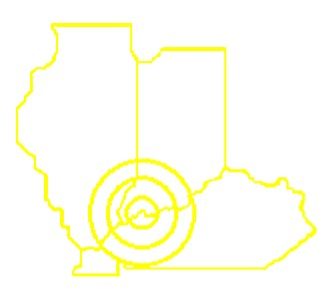
April 1, 2022, the United States of America’s 1950 census was finally released (and that was no joke!). I’ve headed to the 1950 census website and was already able to find names of grandparents, great-grandparents, and even some family that’s still alive today. Ready to learn how to search the census? Then keep scrolling!


Starting Your Search – To start your search, head here to the 1950 census website. Underneath the search bar section (see above) on the left of your screen, there are options for how to search. First, navigate to the “Location” section and plug in the state, followed by the county or city, you want to search. For the state of Kentucky, a dropdown list was available that provided the name of each Kentucky county.
To further narrow your search, submit your family’s first or last name. If you push the magnifying glass by the “Name” portion of the site, your search will begin!


Enumeration Districts – If you aren’t interested in a narrow search, you can always leave off your family’s name and simply do a general search by state and county. If you know your family’s enumeration district, you can also search using that option! Simply look to the left-hand side of the screen and plug in the number under the “Enumeration District (ED)” heading. Do note that this might be a better way to search if your family has a name that is difficult to read or often misspelled. Right now, the collection of names are defined as “computer generated,” so they’re not the most accurate.
Note: If you descend from American Indians, there is also a portion of the site on the left-hand side of the screen that has an “Indian Reservation Schedule” search option. This dropdown list will allow researchers to search Indian tribes, like the Big Cypress, Chippewa, Fond du Lac, and many more.


What You’ll Find – What information might you might find in the 1950 census? The 1950 census follows patterns from previous eras and lists the names of residents, family members’ relation to the head of household, along with the residents’ race, gender, birthplace, occupation, and more.
After enduring World War II, researchers might notice that family members alive in the 1940 census have since been killed in the war. Still other researchers might discover young children that were not yet alive to be counted in the 1940 census, which provides helpful information about the child’s parents and/or siblings. Plus, for some researchers who were born pre-1950 but post-1940, this may be the first time they discover their name in a census. What a neat experience!


Next Steps – If you’ve successfully located your family in the 1950 census, that’s great! You may be wondering what to do with this new-found information, though. Well, it’s a good idea to save these 1950 documents to your computer (and when they’re added to Ancestry and other genealogical sites, to your family tree), so that you have them securely downloaded.
When analyzing and interpreting the information, focus on what the 1950 census tells you about your family. Via the newly released documents you might discover a parent’s or grandparent’s job or even the road they lived on. If the road names are the same, you may even have the opportunity to travel along the same road your family once resided on.


Delving Deeper – Now that the 1950 census has been released, you can delve deeper into your study of the past! If you were alive in the 1950s, consider writing down your memories so that future generations will have a primary source about what life in the decade was like. If you weren’t alive in the 1950s, you might think the era was full of poodle skirts and Elvis music. While those were some components of the decade, there were many more fads, social movements, and events that comprised the era. You can learn more about the 1950s here or check out a timeline of 1950s events here.

I hope the search tools I provided for the 1950 census were helpful! If you’re a member of Ancestry.com, you can also check out what records they currently have pertaining to the 1950 census. As always, remember that genealogy is a marathon, not a sprint, so it’s important to take your time to locate your family’s records.
Happy Researching!



